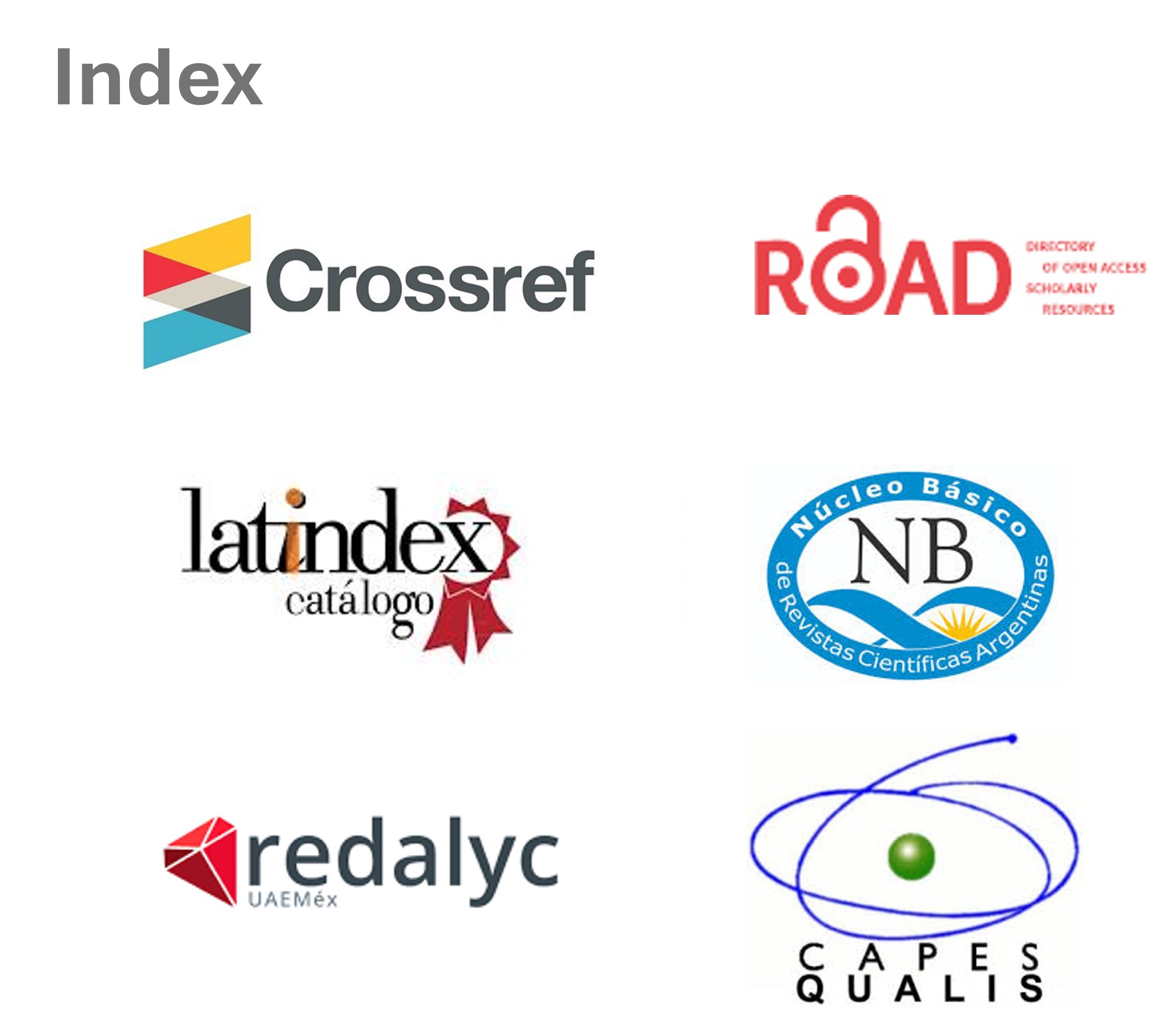Traditions of evidence in nanoscale research: towards an “epistemic culture” of the world of small things
DOI:
https://doi.org/10.48160/18517072re29.242Keywords:
epistemic culture, codification of knowledge, traditions of evidence, instrumentsAbstract
In the 80s, the development of technologies like the scanning tunneling microscope made the manipulation of atomic and molecular structures a reality factually possible. This was because these technologies offer an ontological platform around which disciplines such as physics, chemistry, biology, computer science and engineering formed an “epistemic culture” (Knorr Cetina, 1999) that has made of the appreciation of the visual knowledge a key feature of the nanoscale research. The present work constitutes an initial approach to the characterization of this field of knowledge that explores, through the analysis of the representational resources usually used as evidence, points of contact and break with the traditional practice of science. For this purpose the work is structured in three sections. The first one explores the epistemological, ontological and methodological assumptions of mechanistic and adaptive visions of nanostructures in order to provide an initial characterization of the “epistemic culture” (Knorr Cetina, 1999) in the world of small things. The second explores the epistemological implications of such views in relation to the “traditions of evidence” that led to the very possibility of research at the nanoscale. Finally, the third section analyzes, through an empirical approach to nanotecnoscientific field in Argentina, the process of codification of knowledge that takes place around the instruments commonly used in this field of knowledge.
References
Arsenault, D., L. D. Smith y E. A. Beauchamp (2006), “Visual Inscriptions in the Scientific Hierarchy, Mapping the Treasures of Science”, Science Communication, N° 27, pp. 376- 387.
Ball, P. (2002), “Natural Strategies for the molecular engineer”, Nanotechnology, N° 13, pp. 15-28.
Beaulieu, A. (2002), “Images Are Not the (Only) Truth: Brain Mapping, Visual Knowledge, and Iconoclasm”, Science Technology Human Values, N° 27, pp. 53-86.
Bensaude Vincent, B. (2004), “Two Cultures of Nanotechnology?”, Hyle: International Journal for Philosophy of Chemistry, vol. 10, N° 2, pp. 65-82.
Bueno, O. (2004), “The Drexler-Smalley Debate on Nanotechnology: Incommensurability at Work?”, Hyle: International Journal for Philosophy of Chemistry, vol. 10, N° 2, pp. 83-98.
Comisión Nacional de Energía Atómica (2005), “Disposición 86/04, Proyecto Centro de Nanociencia y Nanotecnología de la Comisión Nacional de Energía Atómica”, Buenos Aires, 28 de junio de 2005.
Comisión Nacional de Ciencia y Tecnología (2004), “Programa Estratégico para el Desarrollo Institucional”, .
Daston, L. y P. Galison (1992), “The Image of Objetivity”, Representations, N° 40, pp. 81-128.
Daston, L. y P. Galison (2007), Objetivity, Nueva York, Zone Books.
Dutrús, S. (2006), “Una mirada a las ciencias a través del microscopio electrónico de barrido”, División Nuevos Materiales y Dispositivos, Centro Atómico Bariloche, Comisión Nacional de Energía Atómica.
Drexler, E. (1986), Engines of Creation, Nueva York, Anchor Books.
Drexler, E. (2001), “Machine-Phase nanotechnology”, Scientific American, pp. 66-67.
Elkins, J. (1999), “Logic and Images in Art History”, Perspectives on Science, vol. 7, N° 2, pp. 151-180.
Elkins, J. (2000), “Review of Jones, C. y P. Galison (eds.) (1998), Picturing Science, Producing Art, Nueva York, Routledge”, Isis, 91, pp. 318-319.
Fundación Argentina de Nanotecnología (2005), “Decreto de creación, Poder Ejecutivo Nacional (380/05)”, .
Forbes (2004), Nanotech Report, vol. 3, N° 12, pp. 1-3, .
Galison, P. (1997), Image and Logic, Chicago, University of Chicago Press.
Gooding, D. (2003), “Varying the Cognitive Span: experimentation, visualisation and computation”, en H. Radder (ed.), The Philosophy of Scientific Experimentation, Pittsburgh, University of Pittsburgh Press, pp. 255-283.
Goodman, N. (1968), Languages of Art, Indianápolis, Bobbs-Merrill.
Granada, M. y H. Troiani (2007), “Para captar el mundo muy pequeño: los microscopios electrónicos”, Desde la Patagonia difundiendo saberes, vol. 5, Nº 6, pp. 32-36.
Haching, I. (1983), Representing and intervening, Cambridge, Cambridge University Press. Instituto Nacional de Tecnología Industrial, .
Knorr Cetina, K. (1999), Epistemic Cultures. How the Sciences Make Knowledge, Cambridge, Harvard University Press.
Latour, B. (1990), “Drawing things together”, en Lynch, M. y S. Woolgar (eds.), Representation in scientific practice, Cambridge, mit Press.
Lewis, D. (1971), “Analog and Digital”, Noûs, vol. 5, Nº 3, pp. 321-327.
Lynch, M. (2002), “Visualization: Representation in Science”, International Encyclopedia of the Social and Behavioral Sciences, pp. 16.288-16.292.
Marey, E. (1878), Le méthod graphique dans les sciences expérimentales, París, G. Masson Editeur.
Meyer, M. y O. Kuusi (2004), “Nanotechnology: Generalizations in an Interdisciplinary Field of Science and Technology”, HYLE: International Journal for Philosophy of Chemistry, vol. 10, Nº 2, pp. 153-168.
National Nanotechnology Initiative (2000), Executive Office of the President of the United States, National Science and Technology Council.
Pichering, A. (1995), The rangle of practice. Time, agency and science, Chicago, Chicago University Press.
Programa Marco de Ciencia y Tecnología del Mercosur (2006), “Declaración de Buenos Aires”,
de mayo de 2006. Reising, A. (2007), “Las prácticas nanotecnocientíficas como objeto de estudio”, en L. Salvático y P. García (eds.), Epistemología e historia de la ciencia. Selección de trabajos de las XVII Jornadas, Universidad Nacional de Córdoba, pp. 455-461.
Reising, A. y R. Barrachina (2007a), “Uso de representaciones visuales en los estudios contemporáneos sobre sistemas dinámicos”, III Simposio Internacional La representación en la ciencia y el arte, La Falda, Facultad de Filosofía y Humanidades y Facultad de Psicología de la Universidad Nacional de Córdoba, 25 al 28 de abril.
Reising, A. y R. Barrachina (2007b), “Las visualizaciones computacionales en las rutinas científicas contemporáneas: aspectos epistemológicos de nuevos formatos representacionales”, XVIII Jornadas de Epistemología e Historia de la Ciencia, La Falda, Escuela de Filosofía de la Universidad Nacional de Córdoba, 25, 26 y 27 de octubre.
Smalley, R. (1999), “Prepared written statement and supplemental material”, Rice University, 22 de junio, .
Staley, K. (1999), “Golden Events and Statistics: What’s Wrong with Galison’s Image/Logic Distinction?”, Perspectives on Science, vol. 7, Nº 2, pp. 196-230.
Whitesides G. (2001), “The Once and Future nanomachines”, Scientific American, pp. 78-83.
Downloads
Published
How to Cite
Issue
Section
License
Copyright (c) 2022 Redes. Journal of Social Studies of Science and TechnologyThe documents published here are governed by the licensing criteria
Creative Commons Argentina.Atribución - No Comercial - Sin Obra Derivada 2.5 https://creativecommons.org/licenses/by-nc-nd/2.5/ar/













